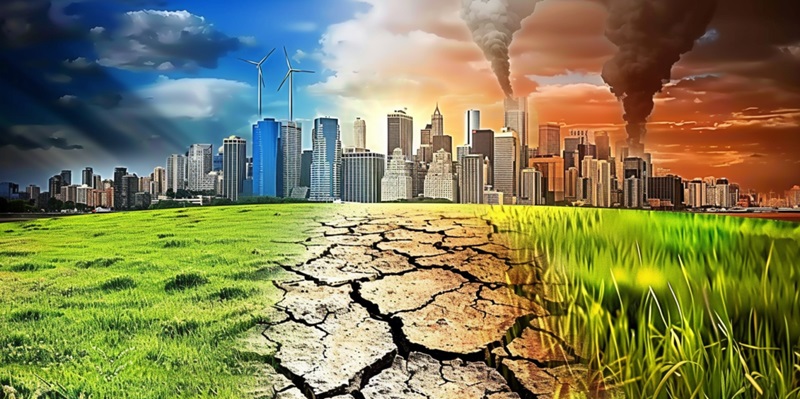Artificial intelligence (AI) is perched at a crucial juncture, with its innovative potentials ready to remap our reality. Despite this, AI’s substantial energy appetite raises concerns about its environmental sustainability. With urgent climate issues at hand, the pressing question is how to harness AI’s power without endangering Earth’s delicate future. Addressing AI’s ecological footprint is imperative, and it requires a nuanced strategy to ensure its development aligns with our sustainability goals. This strategy involves scrutinizing AI’s environmental effects and pursuing a path of green growth that allows us to utilize AI’s advancements while cherishing and protecting our natural world. Embracing this dual focus on progress and preservation is key to a responsible AI-driven future.
The Unsustainable Appetite of AI Systems
AI’s burgeoning power appetite is a source of environmental concern. Data centers pulsating with AI activity draw colossal amounts of electricity and, as a consequence, emissions. Industry experts have raised alarms over the projections that point to power needs for AI potentially doubling every six months. If this trend persists, AI could strain our power grids and clash with goals of renewable energy integration.
The demands of AI are not merely a challenge for energy sustainability; they risk prompting a counterproductive shift toward more fossil fuel plants. This pivot away from cleaner energy sources could undermine efforts to tackle climate change, underscoring an urgency for solutions that address the escalating power requirements of AI technologies.
The Role of AI in Climate Change Mitigation
AI serves as a beacon for the environment by enabling more efficient resource use and lowering emissions. Pioneering efforts like water-cooled data centers are reducing the energy footprint of computing. This technology is set to redefine our approach to environmental management by leveraging its potential in overseeing greenhouse gas emissions and curtailing waste.
Through the implementation of smart grids and advanced management systems, AI can significantly enhance our ability to consume resources wisely. It orchestrates a balance between environmental conservation and sustainable development, ensuring that we tread lightly on the planet while continuing to grow. The integration of AI in environmental strategies promises to not only safeguard our natural resources but to also carve a path toward a more sustainable future for all.
The Indirect Environmental Impact of AI
Looking beyond direct energy consumption, AI’s influence extends to the digital ecosystem where it can inadvertently foster climate misinformation and unsustainable consumption habits. The unchecked nature of AI’s proliferation facilitates the spread of false narratives, complicating the fight against climate change.
This digital quandary reveals deeper environmental repercussions. As AI shapes user behaviors and preferences, it paradoxically generates demand for products and lifestyles contributing to ecological degradation. Setting regulatory boundaries that govern AI’s role in the digital landscape emerges as a crucial step in safeguarding the environment.
AI-Driven Environmental Stewardship
AI isn’t just a technological marvel; its role extends to environmental stewardship as well. With precision, AI monitors natural habitats, keeping a watchful eye on the health of ecosystems. Conservationists harness its capabilities to protect wildlife, utilizing it to track at-risk species and strengthen ecological diversity. Moreover, AI fine-tunes farming techniques to safeguard the environment, contributing to a sustainable future.
These instances underscore AI’s potential to support conservation while pushing the boundaries of innovation. Properly harnessed, AI acts as a catalyst for ecological preservation, merging the advancement of technology with the pressing need to protect our natural world. Through such applications, AI transcends its role as a mere tool and emerges as a critical ally in the quest for sustainability.
Integrating Sustainability into AI
As AI’s reach extends, the call for ‘green AI’ becomes louder and more persistent. Embedding sustainability into the fabric of AI systems from inception is not just an ethical mandate; it’s a strategic necessity. This integration requires the adoption of design principles centered around minimal environmental impact and a mindful approach to innovation.
Tech companies and developers are pivotal in germinating the seeds of green AI, but they require the reinforcement of forward-thinking policies. Together, these forces can transform the trajectory of AI, aligning its growth with the planet’s well-being and setting a precedent for a sustainable technological revolution.
Toward an Eco-Conscious AI Future
Bridging AI’s growth with ecological health is today’s challenge, requiring unison among tech experts, environmental advocates, and policymakers. To harmonize AI’s progression with planetary well-being, this triad must engage in constructive communication and forge a consensus prioritizing the environment. Policies stemming from diverse insights can steer AI toward being an engine for eco-friendly transformation.
Acknowledging the necessity to ingrain sustainability in AI’s core can instigate a new epoch where technology and natural preservation progress jointly. This endeavor for a sustainable AI-driven future speaks to an era where innovation nurtures the planet, ensuring a lasting legacy for generations. With a unified endeavor, AI can underpin a sustainable trajectory, benefiting humanity and Earth alike.

